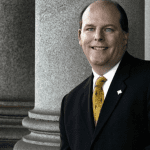A guest post from Mark Tooley, President of the Institute on Religion and Democracy:
A new poll by Pew Research, just in time for Christmas, shows 73 percent of Americans believe in Jesus’ virgin birth by His mother Mary. Even 32 percent of the self-professed religiously unaffiliated said they believe. White evangelicals were the most believing (97%), followed by black Protestants (94%), white Catholics (88%), Hispanic Catholics (81%) and Mainline Protestants (70%). By comparison, other polls show about one third of the British people profess belief in the Virgin Birth.
Popular lore claims America is always growing more secular, like Europe. But attachment to core Christian beliefs remains high and shows no major sign of falling. For example, a 2008 Harris poll found that 61 percent of Americans believed in the Virgin Birth. In 1994 it was 78 percent, in 2000 it was 82 percent, and in 2003 77 percent. Non-Christians who said they believed in the Virgin Birth ranged from 47 to 27 percent during those years. A 2008 Barna Poll found that 75 percent of Americans believe the Virgin Birth, including 15 percent of atheists.
The resilience of the Virgin Birth would surprise American clergy and theologians of 50 and 100 years ago, when the liberal Protestant Social Gospel held sway over nearly all America’s most prestigious religious institutions. Harry Emerson Fosdick, the liberal Baptist who pastored New York’s famed Riverside Church, insisted in the 1920s that “equally loyal and reverent people” could deny the Virgin Birth as “historic fact.” Instead they could accept it as a metaphorical “explanation of great personality is one of the familiar ways in which the ancient world was accustomed to account for unusual superiority.”
In more recent years, retired Episcopal Bishop John Shelby Spong has mocked Christian “literalists” who insist on a historical Virgin Birth. He counters that the story was a “late developing tradition in the Christian faith,” not introduced until some 90 years after Jesus’ birth to help explain his special vocation. Liberal American Catholics often quote German theologian Hans Küng, who described the Virgin Birth as a “collection of largely uncertain, mutually contradictory, strongly legendary” stories common in antiquity. When New York Times columnist Nicholas Kristoff cited Kung in his column 10 years ago, he recalled his devout Presbyterian grandfather who thought the Virgin Birth was a “pious legend.”
A 1998 poll of Mainline Protestant clergy with an apparently large but not scientific sample found many if not most disbelieving the Virgin Birth, from 19 percent of Lutherans, to 34 percent of American Baptists, to 44 percent of Episcopalians and 49 percent of Presbyterians to 60 percent of United Methodists. Most of these clergy would have been seminary educated in the 1960s and 1970s when modernist Protestant theology was cresting.
In our new post-modern era, which elevates narrative and experience over the Enlightenment’s definition of provable fact, rejection of miracles like the Virgin Birth is less common even among seminary trained theological liberals. It’s not rare now in Mainline Protestant circles to find young clergy who are socially liberal but affirm the Virgin Birth and Jesus’ bodily resurrection. On the Virgin Birth at least, there is no longer the 1920’s era division between modernists and “fundamentalists.” Of course, evangelical clergy, with Catholic priests, overwhelmingly affirm the Virgin Birth as history central to their faith. And polls show that overwhelming majorities of Christian lay people always have, including Mainline Protestants.
That so many religious unaffiliated and even some atheists assent to the Virgin Birth seems odd on the surface. But its story of God’s dramatic intervention in the affairs of humanity on behalf of humanity is captivating and almost irresistible. Nativity scenes, static and living, often performed by children across generations, are part of most Americans’ collective warm memory of Christmas long ago and more recently. The story is intrinsically so appealing, and rings true of the God we know is there, that even many religious skeptics have difficulty resisting.
Continued American affirmation of the Virgin Birth is also a rebuff to once confident 20th century liberal Protestant modernism. Its great cathedrals are now mostly empty or struggling; its seminaries diminished its cultural prestige now a historical memory. Telling parishioners that core doctrines of their faith are not actually true except as poetry was never a recipe for success. Clerics like Bishop Spong claimed they were “saving” Christianity for a new generation that supposedly could not believe the old doctrines. But it was Spong’s now aging generation, or at least a subset of it, that could not believe. The tenets they assailed, like the Virgin Birth, will long outlast them.
Kristoff wrote 10 years ago that persistent “faith in the Virgin Birth reflects the way American Christianity is becoming less intellectual and more mystical over time.” But distinguished and popular theologians like British Bishop Tom Wright now offer rich intellectual defense of the Virgin Birth (he prefers to call it the “virginal conception”), as did C.S. Lewis in the last century.
Embedded in Christianity’s creeds, liturgy and hymns, and central to its faith that God miraculously became human in the womb of a young Jewish virgin, the Virgin Birth is here to stay. It offers hope that God so loves humanity that He became a vulnerable human Himself. Such a story is so cosmically powerful and wonderfully persuasive that for billions of people, including most Americans, it can only be true.













